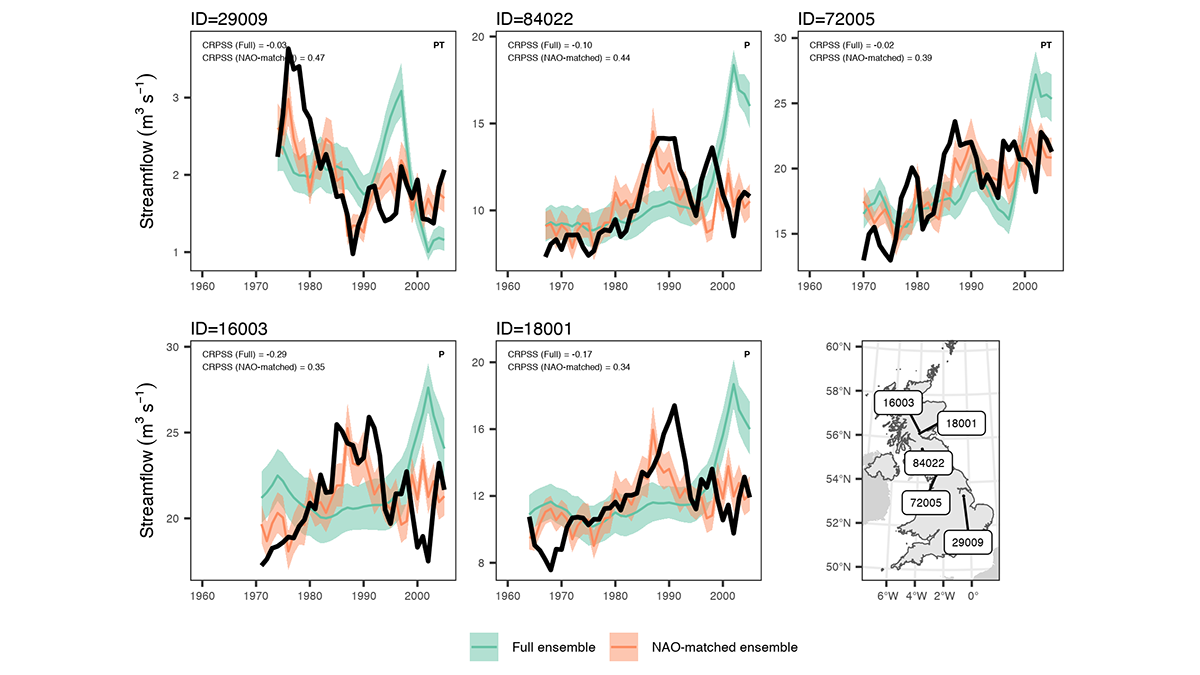Editors’ Highlights are summaries of recent papers by AGU’s journal editors.
Source: Geophysical Research Letters
Predicting flood likelihood over the next decade can inform preparedness and water management sectors, but such predictions are currently lacking. Moulds et al. [2023] show how skillful decadal climate predictions can be used for that task.
By focusing on winter flood conditions for watersheds across the UK, decadal (2-5 years) flood predictions are feasible, but their robustness depends on whether catchment flooding severity and frequency can be related to the intensity of the westerly winds blowing across the North Atlantic Ocean between 40 and 60°N, known as the North Atlantic Oscillation. The new dynamical-statistical approach developed by the authors can provide a useful decision-making tool for flood risk managers and water resource planners.
Moulds, S., Slater, L. J., Dunstone, N. J., & Smith, D. M. (2022). Skillful decadal flood prediction. Geophysical Research Letters, 49, e2022GL100650. https://doi.org/10.1029/2022GL100650
—Valeriy Ivanov, Editor, Geophysical Research Letters


